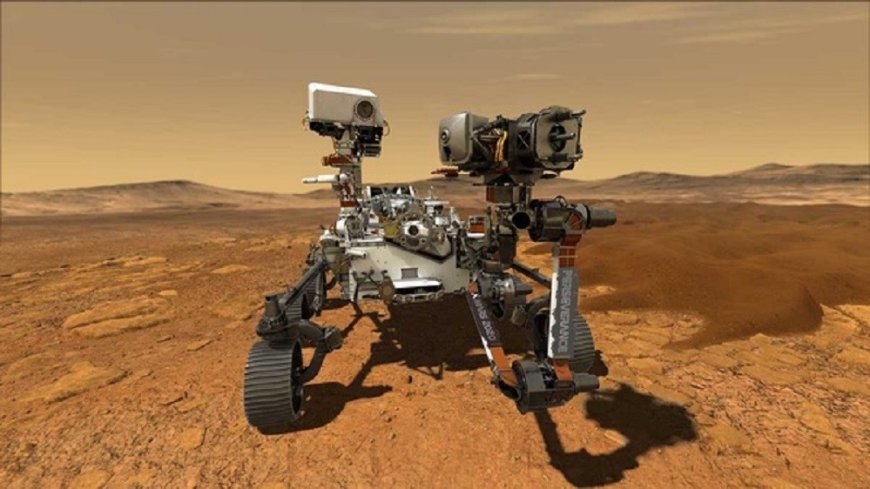Mars Ice Mapper mission
planned to search for ice deposits under the surface of Mars, the forerunner of human missions there. Mars Ice Mapper mission.

NASA and three international partners have signed a cooperation agreement on a mission planned to search for ice deposits under the surface of Mars, the forerunner of human missions there. Mars Ice Mapper mission.
In a Feb. 3 statement, NASA said it had signed a "Memorandum of Understanding" on the Mars International Ice Map with the Canadian Space Agency (CSA), the Japan Aerospace Exploration Agency (JAXA) and the Italian Space Agency ASI. As part of this agreement, the agencies will examine the concept of mission and possible roles and responsibilities.
NASA presented the mission concept a year ago in its budget proposal for the 2021 budget year. The spacecraft will soon be launched in 2026 and orbit Mars and use radar to search for ice deposits under the Martian surface that could be explored by future missions on the surface of Mars, including human mission.
In a statement, NASA did not disclose a possible role for international partners in the mission. However, at an earlier advisory committee meeting, agency officials said CSA would provide the radar, JAXA - the space bus, and ASI - a communications subsystem for the spacecraft. NASA will be responsible for overall mission management and spacecraft launch.
"The innovative partnership model for Mars Ice Mapper combines our global experience and enables cost sharing across the range to make this mission more applicable to everyone involved," said Jim Vacin, NASA's senior consultant who helped plan the mission. Mars and the former head of the Mars Exploration Program Agency, said the statement.
Must Read: A Black Computing Pioneer takes its place in history of computer technology at MIT
NASA hasn't set an official estimate for its mission share, but Watzin said at a November meeting of a committee supporting the current decade of planetary science that the agency estimates that its part in the mission will cost $ 185 million.
During the meeting, Watzin said that Map Ice Mapper is an integral part of long-term planning of human missions on Mars, identifying locations where water ice can be within 5 to 10 meters of the surface and thus accessible to manned expeditions. "The Mars Ice Mapper mission has been identified as a key precursor to obtaining this important information so that we can decide where to go for the first human mission and how to prepare for it," he said.
The mission was received with skepticism by Martian scientists who questioned the priority of the ice mapping mission over other scientific goals. At the November meeting, Watzin said the Mars Ice Mapper was a "predecessor mission" that also had scientific advantages over the Lunar Reconnaissance Orbiter mission, which was originally launched to support efforts to study the lunar constellations that now belong to NASA's planetary science program. .
In a letter of intent, NASA said its partners would "explore the possibility of undertaking missions" in the next phase of the Mars Ice Mapper study. "All scientific data from the mission will be made available to the international scientific community for planetary research and Mars intelligence."
"Mapping water ice near the surface will reveal parts of Mars' hydrosphere that are still hidden and stratified above, which can help unravel the history of changes in the Martian environment and answer fundamental questions about whether Mars ever existed was home to microbial life, or could it be today. , "said Eric Janson, director of the Mars Exploration Program.
At a meeting of the Mars exploration program analysis group on January 27, Jansson said that in addition to the MOU, NASA was preparing for a "pre-acquisition strategy meeting" in the near future. This meeting will determine the guide center for the Mars Ice Mapper mission and other issues before the official mission begins.
During the same meeting, Watzin expects a formal Memorandum of Understanding to be finalized between the agencies involved in the mission in late spring or early summer. "This will unite the mission team and then we can make serious progress," he said.
NASA's announcement of NASA's will includes an illustration of Mars ice communications communicating with three spacecraft in Mars orbit and returning to Earth as communications relays. The report does not address these relays, but agency officials have previously discussed developing a network of Mars communications satellites, possibly through a public-private partnership to support the Mars Ice Mapper. Reuters
